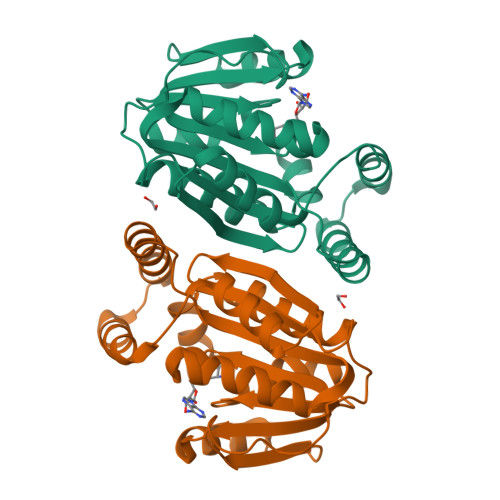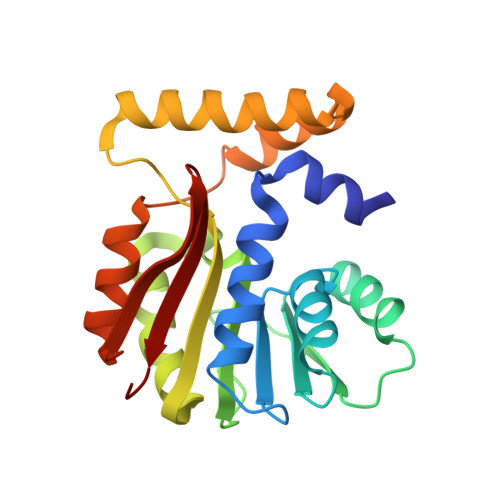Deciphering the SAM- and metal-dependent mechanism of O-methyltransferases in cystargolide and belactosin biosynthesis: A structure-activity relationship study.
Kuttenlochner, W., Beller, P., Kaysser, L., Groll, M.(2024) J Biological Chem 300: 107646-107646
- PubMed: 39121999
- DOI: https://doi.org/10.1016/j.jbc.2024.107646
- Primary Citation of Related Structures:
9FCD, 9FCE, 9FCL, 9FCQ, 9FCS, 9FCU, 9FCX, 9FCY, 9FD3, 9G0K - PubMed Abstract:
Cystargolides and belactosins are natural products with a distinct dipeptide structure and an electrophilic β-lactone warhead. They are known to inhibit proteases such as the proteasome or caseinolytic protease P, highlighting their potential in treating cancers and neurodegenerative diseases. Recent genetic analyses have shown homology between the biosynthetic pathways of the two inhibitors. Here, we characterize the O-methyltransferases BelI and CysG, which catalyze the initial step of β-lactone formation. Employing techniques such as crystallography, computational analysis, mutagenesis, and activity assays, we identified a His-His-Asp (HHD) motif in the active sites of the two enzymes, which is crucial for binding a catalytically active calcium ion. Our findings thus elucidate a conserved divalent metal-dependent mechanism in both biosynthetic pathways that distinguishes BelI and CysG from previously characterized O-methyltransferases.
Organizational Affiliation:
Department of Bioscience, Center for Protein Assemblies (CPA), TUM School of Natural Sciences, Technical University of Munich, Garching, Germany. Electronic address: wolfgang.kuttenlochner@tum.de.


















